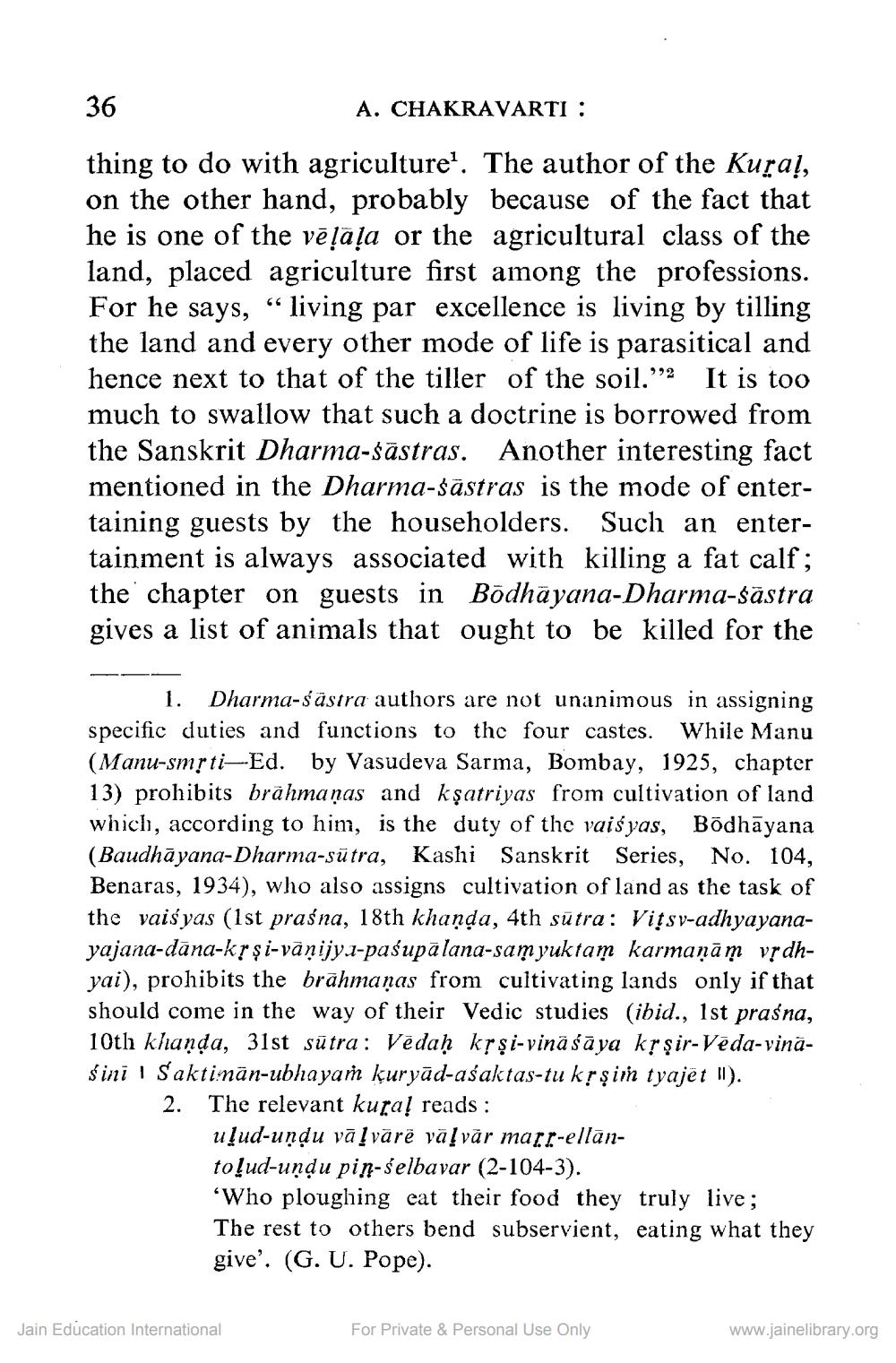________________
36
A. CHAKRAVARTI :
thing to do with agriculture'. The author of the Kuraļ, on the other hand, probably because of the fact that he is one of the vēļāļa or the agricultural class of the land, placed agriculture first among the professions. For he says, “living par excellence is living by tilling the land and every other mode of life is parasitical and hence next to that of the tiller of the soil.”2 It is too much to swallow that such a doctrine is borrowed from the Sanskrit Dharma-śāstras. Another interesting fact mentioned in the Dharma-śāstras is the mode of entertaining guests by the householders. Such an entertainment is always associated with killing a fat calf; the chapter on guests in Bödhayana-Dharma-śāstra gives a list of animals that ought to be killed for the
1. Dharma-sästra authors are not unanimous in assigning specific duties and functions to the four castes. While Manu (Manu-smști-Ed. by Vasudeva Sarma, Bombay, 1925, chapter 13) prohibits brāhmaṇas and ksatriyas from cultivation of land which, according to him, is the duty of the vaisyas, Bödhāyana (Baudhāyana-Dharma-sūtra, Kashi Sanskrit Series, No. 104, Benaras, 1934), who also assigns cultivation of land as the task of the vais yas (1st praśna, 18th khaņda, 4th sūtra: Vitsv-adhyayanayajana-dana-krși-vānijya-pasupalana-samyuktam karmaņām vşdhyai), prohibits the brāhmaṇas from cultivating lands only if that should come in the way of their Vedic studies (ibid., 1st praśna, 10th khanda, 31st sūtra: Vēdaḥ kṣşi-vināśāya krşir-Vēda-vinäś ini I Saktinān-ubhayam kuryād-asaktas-tu krșiin tyajet 11).
2. The relevant kural reads:
uļud-undu vāļvārē vāļvār marr-ellantoļud-undu pin-selbavar (2-104-3). 'Who ploughing eat their food they truly live; The rest to others bend subservient, eating what they give'. (G. U. Pope).
Jain Education International
For Private & Personal Use Only
www.jainelibrary.org




